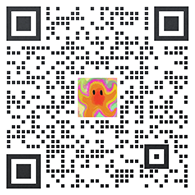2025-01-13 13:44:04

《python实现
pdf合并与拆分》
在日常工作和学习中,对pdf文件进行合并和拆分是常见需求。python借助第三方库可以轻松完成这些操作。
对于合并pdf,pypdf2库是一个很好的选择。通过创建一个pdffilemerger对象,循环读取要合并的pdf文件,并将其添加到合并对象中,最后将合并结果输出为一个新的pdf文件。
而拆分pdf同样可利用pypdf2。读取源pdf文件后,根据页面范围,将指定页面提取出来创建新的pdf文档。
python的强大之处在于能高效自动化处理文档任务。使用这些方法可以快速、批量处理pdf的合并与拆分,提高工作效率,节省时间。

《python合并多个文件》
在python中,合并多个文件可以使用多种方法。如果是文本文件,可以利用文件读取和写入操作。
首先,导入`os`模块用于文件路径相关操作。以合并多个文本文件为例,定义一个目标文件用于存储合并后的内容。然后,遍历要合并的文件列表。对于每个文件,使用`open`函数以读模式打开文件,读取内容并写入到目标文件中。
例如:
```python
import os
file_list = ['file1.txt', 'file2.txt']
with open('merged_file.txt', 'w') as outfile:
for file in file_list:
if os.path.isfile(file):
with open(file) as infile:
outfile.write(infile.read())
```
这样就简单地将多个文件的内容合并到了一个新的文件中。不同类型的文件(如二进制文件)在读取和写入时需要调整相应的模式参数。
python 拆分pdf

《python拆分pdf》
在日常工作和学习中,有时需要对pdf文件进行拆分。python提供了便捷的方法来实现这一功能。
借助`pypdf2`库,我们可以轻松拆分pdf。首先安装`pypdf2`,然后在python脚本中导入。读取目标pdf文件后,能获取其页数。通过循环遍历每一页,创建新的pdf对象,将每页依次添加到新对象中,就可以将原pdf按照页拆分成多个小的pdf文件。例如:
```python
import pypdf2
with open('original.pdf', 'rb') as file:
pdf = pypdf2.pdffilereader(file)
for page_num in range(pdf.getnumpages()):
new_pdf = pypdf2.pdffilewriter()
new_pdf.addpage(pdf.getpage(page_num))
with open(f'page_{page_num + 1}.pdf', 'wb') as output:
new_pdf.write(output)
```
这样,利用python就能高效地拆分pdf文件,满足各种需求。
python怎么合并

《python中的合并操作》
在python中,有多种合并操作。对于列表合并,可以使用“+”运算符。例如,list1 = [1, 2],list2 = [3, 4],合并后的列表new_list = list1 + list2,结果为[1, 2, 3, 4]。
字典的合并在python 3.5及以上版本中可以使用“**”操作符。如dict1 = {'a': 1},dict2 = {'b': 2},合并字典new_dict = {**dict1, **dict2},得到{'a': 1, 'b': 2}。
对于字符串,同样可以用“+”来合并。str1 = "hello",str2 = "world",合并后的字符串new_str = str1 + " " + str2,即“hello world”。这些简单的合并操作在数据处理和程序逻辑构建中非常实用。




